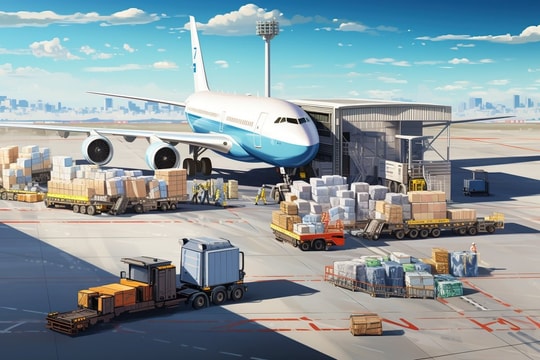
Widespread strikes and supply chain risks
As of last night, container and ro-ro ports along the US East and Gulf coasts have entered into a large-scale strike, with over 45,000 members of the International Longshoremen's Association (ILA) walking out after failing to reach an agreement with port operators. These ports handle more than half of the US's container traffic, from Maine to Texas, and the strike is expected to severely disrupt supply chains in the region.
International freight forwarder Scan Global Logistics (SGL) announced it is still accepting ocean freight bookings to the East Coast but advised customers to consider alternative routes, such as shipping through the West Coast and using overland transport. This strategy is aimed at avoiding direct impacts from the strikes, which could cause significant delays and affect critical shipments.
SGL also recommended that clients review air freight or sea-air combinations to mitigate risks. Meanwhile, carriers have started issuing strike-related surcharges, reflecting mounting pressures in the logistics sector.
Another freight forwarder, Flexport, predicted that each day of the strike would lead to 5-10 days of cargo buildup at ports, increasing the risk of supply shortages and lengthening delivery times. If the strike lasts more than a week, the shortage of transport capacity could worsen, leading to prolonged delays.
In a note to customers, Flexport advised: "Review all your inventory en route to East Coast and Gulf Coast ports, and assess risks. The key decision is whether to reorder critical SKUs and reroute them through the West Coast before prices spike, or move them via air freight to spread the risk."
Air freight as a holiday shipping option
The strike comes just before the peak holiday shopping season, a time when demand for shipping is at its highest. Businesses may be forced to shift to air freight to ensure timely deliveries, which could cause air freight rates to surge in an already strained market.
The duration of the strike remains unclear. A last-minute offer from the US Maritime Alliance (USMX) proposing a 50% wage increase over six years was rejected by the ILA, though the two sides have resumed negotiations. Reports suggest that USMX and ILA are now exchanging new wage proposals, hoping to continue bargaining over the remaining issues and reach an agreement.
In addition to wage hikes, the ILA has expressed concerns about potential automation of port functions, fearing it could negatively impact jobs. The USMX’s proposal includes a nearly 50% wage increase, tripling employer contributions to retirement funds, and maintaining the current terms regarding automation and semi-automation.
Post-strike crisis and long-term impacts
The strikes at major US ports are having severe repercussions for supply chains and industries that rely on timely shipments. Sectors such as retail, automotive, and manufacturing are expected to be hit the hardest as port disruptions delay key shipments, raise costs, and disrupt delivery schedules.
Christian Roeloffs, co-founder and CEO of Container xChange, noted that small businesses, in particular, are vulnerable to rising costs and extended delays in securing and moving containers. If these businesses fail to reroute shipments and secure container supplies now, they risk being "stuck" in a congested and expensive aftermath".

Retailers, for example, are already rushing to import goods ahead of the holiday season. Without contingency plans, many companies will face severe shortages, missed delivery deadlines, and skyrocketing logistics costs. The automotive industry, heavily reliant on timely delivery of parts and components, could see production delays, especially for vehicles assembled in the US with parts arriving through East Coast ports.
The strike could prove to be a "tipping point" for many businesses, as each day of the strike could add five more days of delays, further squeezing already tight profit margins and production timelines. For many companies, this is not just a temporary crisis but a wake-up call, emphasizing the need to diversify shipping methods and better prepare for future supply chain risks.









.jpg)


.png)
.png)
.png)


.png)
.png)






.png)

